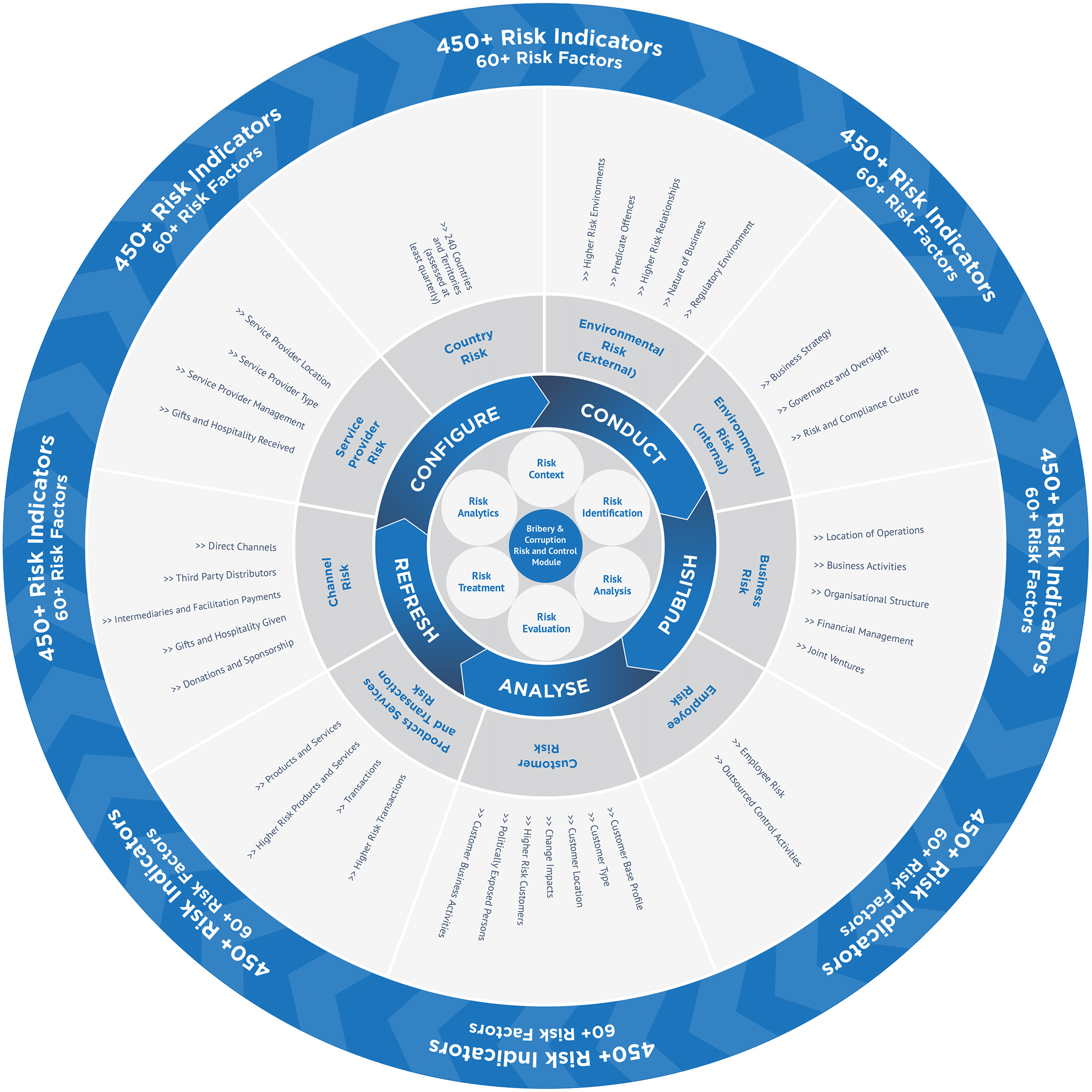WHAT IS
Bribery and corruption risk?
Bribery and corruption risk refers to the potential for individuals or organisations to engage in unethical or illegal activities, such as offering or accepting bribes, in order to gain an unfair advantage or manipulate a situation. This risk can undermine trust, distort fair competition, and harm economies and societies. Companies often implement measures to mitigate these risks and ensure ethical behaviour in their operations.
WHAT IS A
Bribery and Corruption Risk Assessment?
A Bribery and Corruption Risk Assessment is a systematic evaluation carried out by organisations to identify, analyse, and understand the potential risks related to bribery and corruption within their operations. It involves assessing various aspects of the organisation's activities, such as business relationships, transactions, geographic locations, and industry practices, to determine the likelihood and potential impact of bribery and corruption occurrences.
The assessment helps organisations gauge the vulnerabilities they might face and allows them to prioritise resources and efforts to prevent and address these risks effectively. It often results in the development of strategies, policies, and controls to mitigate the identified risks and promote a culture of transparency, integrity, and compliance within the organisation.
HOW DO I CONDUCT A
Bribery and Corruption Risk Assessment?
Conducting a Bribery and Corruption Risk Assessment involves several steps including:
- Scope Definition: Clearly define the scope of your assessment, including the business units, functions, and geographic regions to be covered. Identify the objectives and expected outcomes of the assessment.
- Risk Identification: Identify potential bribery and corruption risks within your organisation. Consider factors such as business operations, relationships with third parties, industry practices, and regulatory environments.
- Data Collection: Gather relevant data, including financial records, transaction histories, policies and procedures, contracts, and communication records. Engage with employees, stakeholders, and experts to gain insights.
- Risk Assessment: Evaluate the identified risks based on their likelihood and potential impact. This can be done using a risk matrix that categorises risks as high, medium, or low based on these factors.
- Root Cause Analysis: Investigate the root causes of identified risks. Determine why these risks exist and what factors contribute to their occurrence.
- Control Evaluation: Assess the existing controls and measures in place to mitigate bribery and corruption risks. Determine their effectiveness and identify gaps.
- Risk Ranking: Prioritise risks based on their severity and potential consequences. Focus on addressing high-priority risks first.
- Mitigation Strategies: Develop and implement mitigation strategies for high-priority risks. These strategies may include revising policies, enhancing due diligence procedures, conducting training, and strengthening internal controls.
- Monitoring and Reporting: Establish a system for ongoing monitoring of risks and controls. Regularly report the progress of risk mitigation efforts to relevant stakeholders.
- Training and Awareness: Educate employees and stakeholders about the risks of bribery and corruption, the organisation's policies, and how to report suspicious activities.
- Documentation: Document the entire assessment process, including findings, analysis, mitigation strategies, and outcomes. This documentation serves as a reference for future assessments and audits.
- Review and Continuous Improvement: Periodically review and update the assessment to ensure its relevance and effectiveness. Incorporate lessons learned and adapt strategies as needed.
Remember that each organisation's assessment process might vary based on its size, industry, and specific risk landscape. It's often helpful to involve legal experts, compliance professionals, and external consultants with expertise in anti-bribery and anti-corruption practices.
Download our Bribery and Corruption Risk Fact Sheet
Download our Bribery and Corruption Risk and Control Module Brochure
Click on the button to download the Bribery and Corruption Risk and Control Module Brochure
COMPLETE THE FORM
Access the Content Module Overview
The content module overview provides an introduction to bribery and corruption, and outlines the necessity and methods for its implementation.
Additionally, it presents the Arctic Intelligence Risk Assessment Platform, highlighting its potential advantages for your business.
Request your free copy now!


